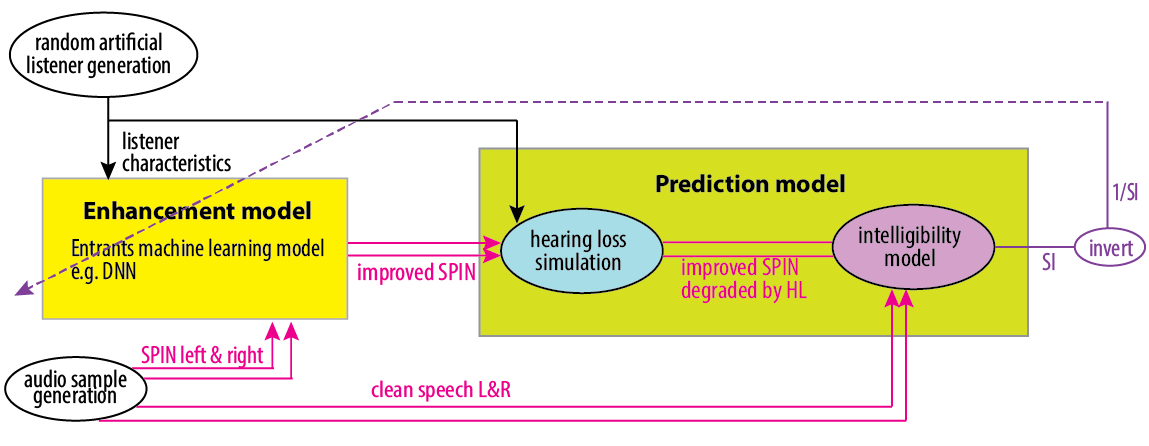CEC1 eval data released
The evaluation dataset is now available to download from the myairbridge download site. The evaluation data filename is clarity_CEC1_data.scenes_eval.v1_1.tgz.
Full details of how to prepare your submission are now available on this site. Please read them carefully.
Registration: Teams must register via the Google form on the How To Submit page of this site. (Please complete this even if you have already completed a pre-registration form). Only one person from each team should register. Only those who have registered will be eligible to proceed to the evaluation. Once you have registered you will receive a confirmation email, a team ID and a link to a Google Drive to which you can upload your signals.
Submission deadline: The deadline for submission is the 15th June.
The submission consists of two components:
i) a technical document of up to 2 pages describing the system/model and any external data and pre-existing tools, software and models used. This should be prepared as a Clarity-2021 workshop abstract and submitted to the workshop.
ii) the set of processed signals that we will evaluate using the MBSTOI metric. Details of how to name and package your signals for upload can be found on the How To Submit page.
Listening Tests: Teams that do well in the MBSTOI evaluation will be notified on 22nd June and invited to submit further signals for the second stage Listening Test evaluation.
For any questions please contact us at claritychallengecontact@gmail.com or by posting to the Clarity challenge google group.
